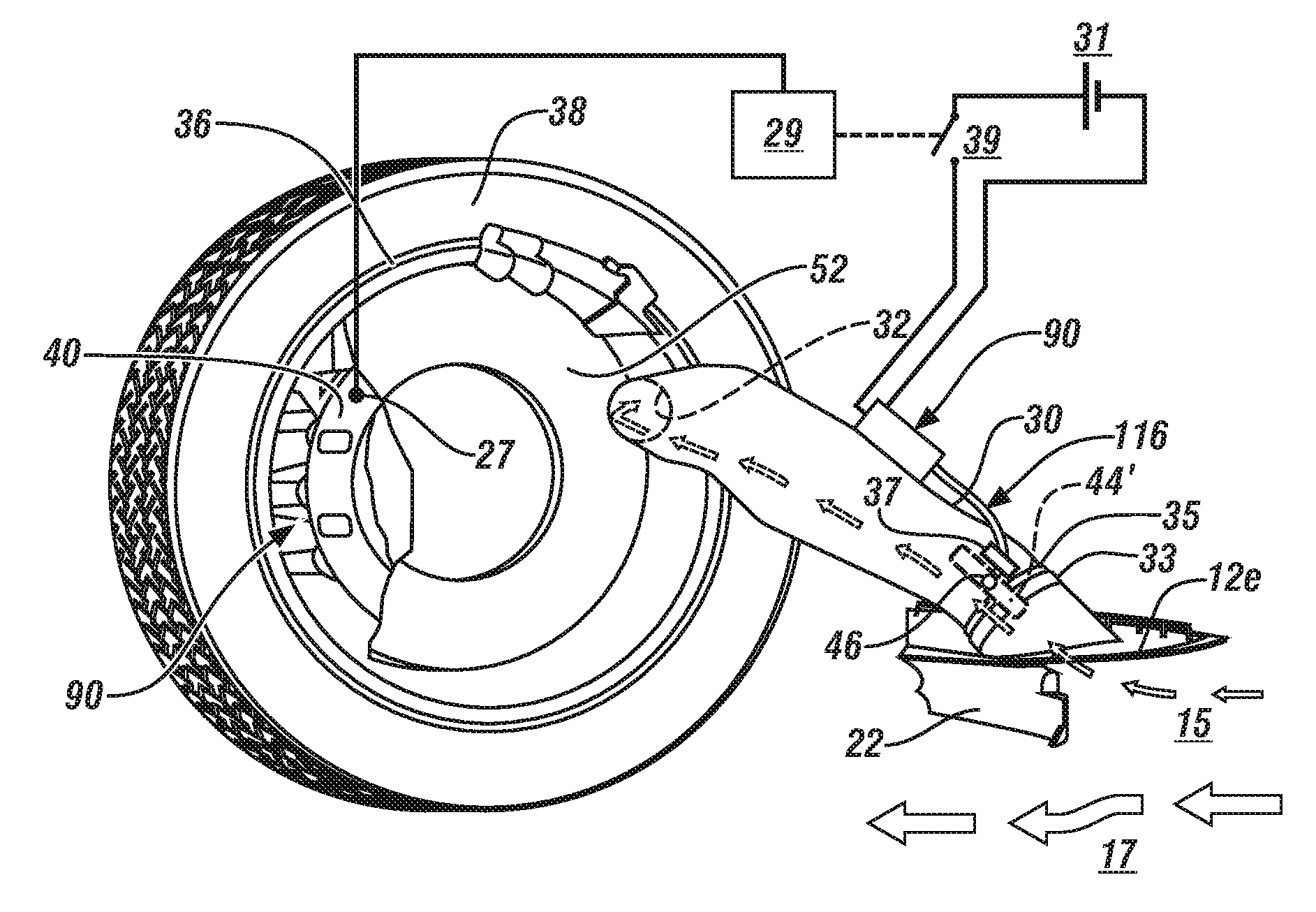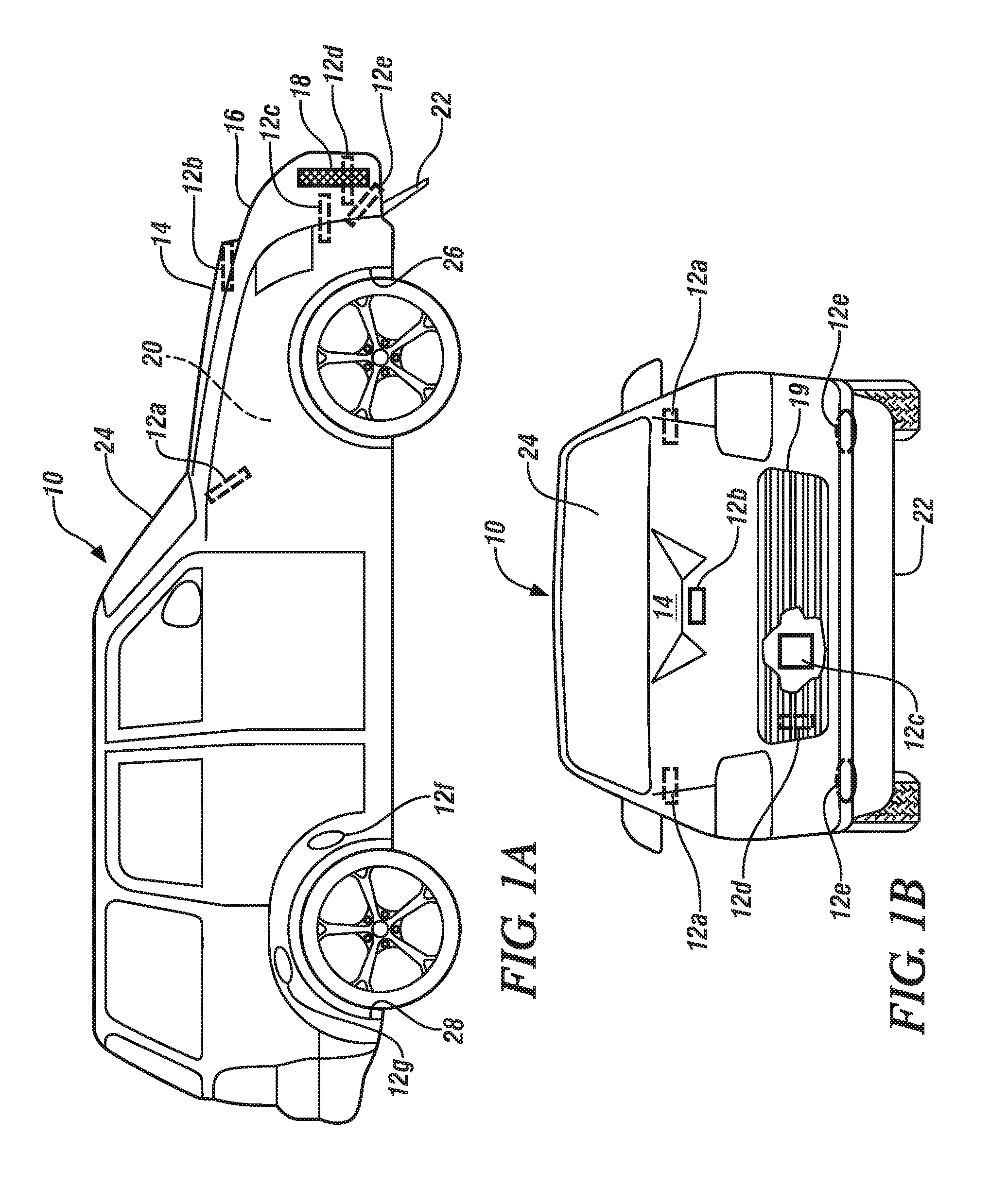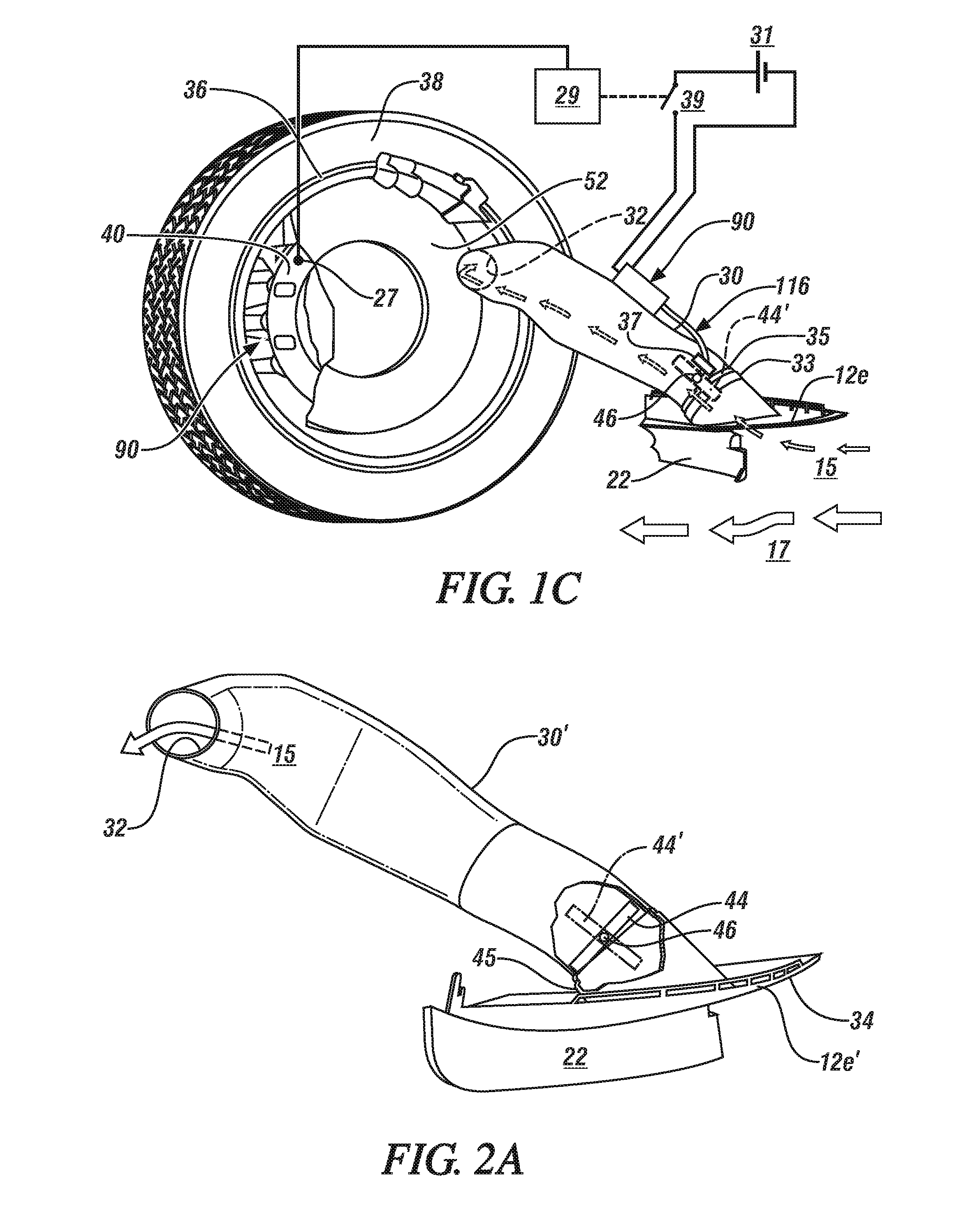Powered vehicle brake cooling system
a technology for brake cooling and powered vehicles, applied in the direction of brake systems, brake discs, fluid actuated brakes, etc., can solve the problems that the open duct and inlet may have an adverse effect on the local streamlined air flow, and achieve the effect of rapid actuator response and facilitate the reverse transformation
- Summary
- Abstract
- Description
- Claims
- Application Information
AI Technical Summary
Benefits of technology
Problems solved by technology
Method used
Image
Examples
Embodiment Construction
[0033]A method of providing supplementary cooling air to the brakes of a vehicle, when needed, is described. Typically this need will arise when the brakes attain and exceed a predetermined elevated temperature, but other, more anticipatory, strategies may also be used. These could include consideration of the time-derivative of brake temperature rise, or consideration of prior experience on a frequently-travelled route or even knowledge of, for example mountainous, terrain gleaned from an on-board GPS unit and suitable mapping software In the most readily implemented embodiment, a temperature sensor, in communication with a controller, senses the brake temperature and, when the sensed brake temperature exceeds a predetermined limit, the controller acts to enable a flow of cooling air to the brakes.
[0034]Manual implementation is also possible. An operator-selectable switch might be used to select or deselect the cooling air. Where a vehicle provides the operator a choice of performa...
PUM
 Login to View More
Login to View More Abstract
Description
Claims
Application Information
 Login to View More
Login to View More - R&D
- Intellectual Property
- Life Sciences
- Materials
- Tech Scout
- Unparalleled Data Quality
- Higher Quality Content
- 60% Fewer Hallucinations
Browse by: Latest US Patents, China's latest patents, Technical Efficacy Thesaurus, Application Domain, Technology Topic, Popular Technical Reports.
© 2025 PatSnap. All rights reserved.Legal|Privacy policy|Modern Slavery Act Transparency Statement|Sitemap|About US| Contact US: help@patsnap.com



